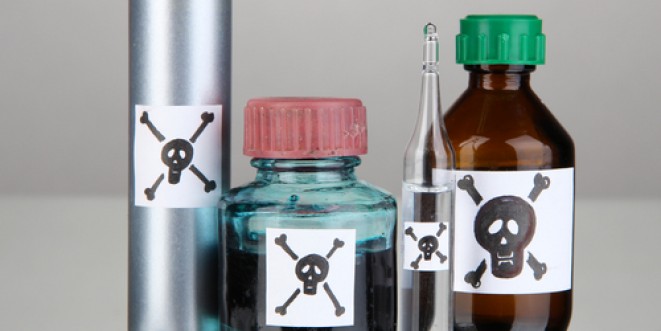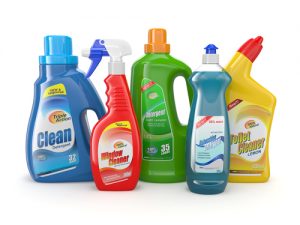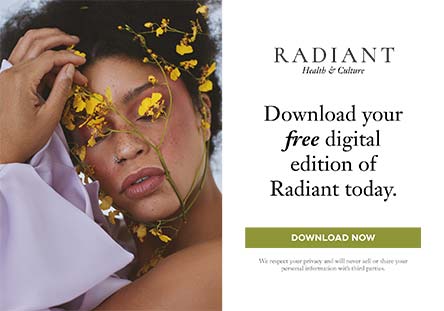Do You Know What To Do In the Case of Accidental Poisoning?
By Kemi ShoyinkaPublished: July 14, 2015

Expert Advice
According to the English dictionary, a poison is any substance that can cause injury, illness or death to a living organism when absorbed or introduced.
Poison is anything that can cause harm if it is:
1) Used in the wrong way 2) Used by the wrong person or 3) Used in the wrong amount.
Poisoning is a huge public health issue for children. Most poisonings that occur in children are unintentional but are preventable and predictable. When it comes to medicines and children, extra precautions are taken because over 90% of poisoning exposures occur at home.
What are the factors that predispose children to poisoning?
Developmental factors
- From about 9 months of age, when children are able to maneuver through the home, they learn how to open cabinets, how to examine the content and grab items that were previously out of reach. Fine motor skills enable children open simple screw-on caps or bottle tops especially of medicine and chemical containers.
- Curiosity and desire for oral stimulation and motor skills will often make children place new objects with potentially dangerous substances in their mouth for tasting, swallowing or play.
- Well-meaning older children attempting to ‘help” around the house by using toxic cleaning products.
Environmental factors
The kitchen, bathrooms, laundry room, and car garages are common places where toxic substances are stored in most homes. Accidental poisoning can occur from:
- Storing frequently used cleaning products in lower cabinets for adults’ easy access.
- Having cleaning products stored in containers similar to those used for food or drinks.
- Medications that look identical to candy or sweets.
- Household products that have fruity odor and color.
Potential poisonous agents in the home
- Cosmetics and personal care products
- Cleaning products
- Laundry products
- Alcoholic beverages
- Foreign bodies such as stones, wood chips.
- Arts/crafts/office supplies
- Topical agents (creams and lotion)
- Plants (indoor and outdoor)
- Medications including antibiotics, vitamins, cough and cold preparations and antihistamines
- Pesticides/Insecticides
- Batteries, especially button batteries.
- Gases such as carbon Monoxide
Know the Signs of Poisoning
- Unexplained nausea, vomiting and/or diarrhea
- Chest and/or abdominal pain
- Unusual drooling or odor on breath
- Suspicious stains on clothing
- Headache or blurred vision
- Numbness, chills or fever
- Burns or rash on lips, mouth or skin
- Difficulty breathing
- Sudden behavior changes ( sleepiness, irritability, jumpiness)
- Seizures, convulsions or unconsciousness
Do not force a child suspected of poisoning to vomit because it might lead to aspiration, a dangerous condition in which the vomit is breathed into the lungs or airways leading to the lungs.
If and when you suspect your child has been poisoned, call for help immediately and take the product and child to the emergency department.
In the U.S, call 1-800-222-1222, the calls are free and the Poison control centers are available 24 hours, 7 days a week. Call 911 if the child is having difficulty breathing.
What to do while waiting for medical help
- Begin CPR if the child shows no signs of life, such as moving, breathing or coughing.
- If the child vomits, turn his or her head to the side to prevent choking.
- Have somebody gather pill bottles, packages or containers with labels, and any other information about the poison to send along with the ambulance or show the medical team.
- Try to determine the amount ingested and how long since the child was exposed to it.
- For swallowed poison, remove anything remaining in the child’s mouth. If the suspected poison is a household cleaner or other chemical, read the container’s label and follow instructions for accidental poisoning.
- For poison in the eye, gently flush the eye with cool or lukewarm water for 20 minutes or until help arrives.
- For poison on the skin, remove any contaminated clothing using gloves or plastic covering on your hands. Rinse the skin for 15 to 20 minutes with cool water in a shower or with a hose; avoid using hot water.
- For inhaled poison, get the person into fresh air as quickly as possible.
How to guard against poisoning
- Read labels to determine hazardous ingredients such arsenic acid, ethylene glycol, methanol, ammonia, formaldehyde e.t.c.
- Be familiar with instructions for accidental poisoning on household products containers’ labels.
- Keep cosmetics and potentially harmful product separate and away from children.
- Store household cleaning supplies and other chemicals in secure compartment, out of reach of children.
- Keep all medications (prescriptions and nonprescription) in their original child-resistant containers.
- Never call medicine “candy”.
- Always follow the “KEEP OUT OF REACH” warning.
Remember, prevention is always better than cure.
Like what you're reading? Sign up for our free newsletter and never miss a post! Plus get a FREE digital version of our Issue No.10 with sign up.














